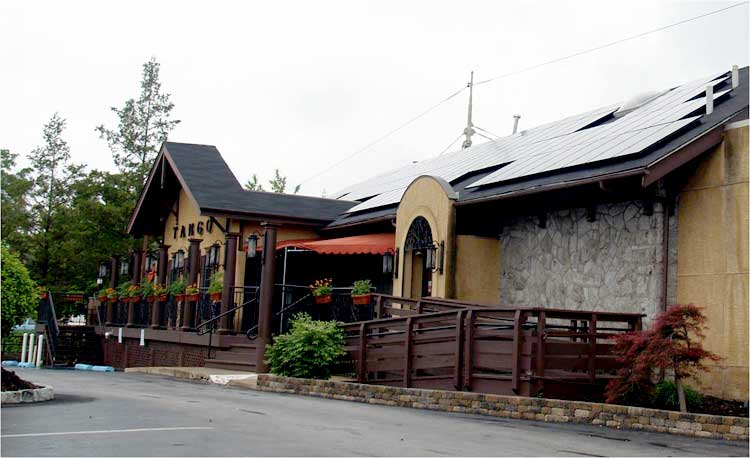In 1857, the Pennsylvania Railroad purchased the Philadelphia &
Columbia Railroad from the state. The Pennsylvania Railroad was
tremendously influential in the development of the Main Line but this
was especially the case in Bryn Mawr, which the Railroad decided to
develop as an elite residential community and a summer resort.
After purchasing the Philadephia & Columbia, the Pennsylvania
Railroad worked for a decade straightening and improving the line. As
part of this process the Railroad acquired large tracts of land in
Humphreysville. Instead of haggling with farmers over the right-of-way,
they just bought properties. As part of the effort to build an elite
residential community and summer resort, the Railroad built this
station and renamed the town "Bryn Mawr," a name taken from Rowland
Ellis' home built in 1704 – which has been known as
Harriton House since 1719.
Many people assume that Welsh and Celtic names are a legacy of the
Welsh settlement, most in fact are a creation of the Pennsylvania
Railroad in the late 19th century. The railroad wanted to create an
elite suburb and viewed many of the existing names as too common. This
process of building stations took place all along the Main Line, but
the Railroad was most directly and deliberately involved in Bryn Mawr's
real estate development.
The Pennsylvania Railroad put restrictions on the lots it sold in Bryn
Mawr. These included: setbacks; cost of improvements (improvements on
Montgomery had to be at least $8,000, along other streets at least
$5,000); time frame (had to build within two years and be finished
within three); also prohibited were certain types of buildings (hotels,
taverns, drinking saloons, blacksmith, carpenter or wheelwright shops;
steam mills, tanneries, slaughterhouses, livery stables; glue, candle,
soap, or starch manufactories; or other buildings of other "offensive
occupation").

Bryn Mawr Station – the baggage building still remains; occupied by
Tango restaurant
In 1860 the Pennsylvania Railroad bought 283 acres of land to
straighten the railroad tracks, improve roads, open new roads and plant
trees. A few years later they decided to build an elaborate Victorian
style building as the stop near the Bryn Mawr Hotel, and they called
the building the Bryn Mawr Train Station. Train conductors picked up
baskets of supplies in Philadelphia and Lancaster to provide the
supplies for the hotel. Bryn Mawr was the showplace of the Main Line
stations. It was the largest and busiest of the stations. Designed by
the Wilson Bros., it was built in 1863. The original station was
demolished in 1969, but the freight or baggage building still remains
and is occupied by Tango restaurant.